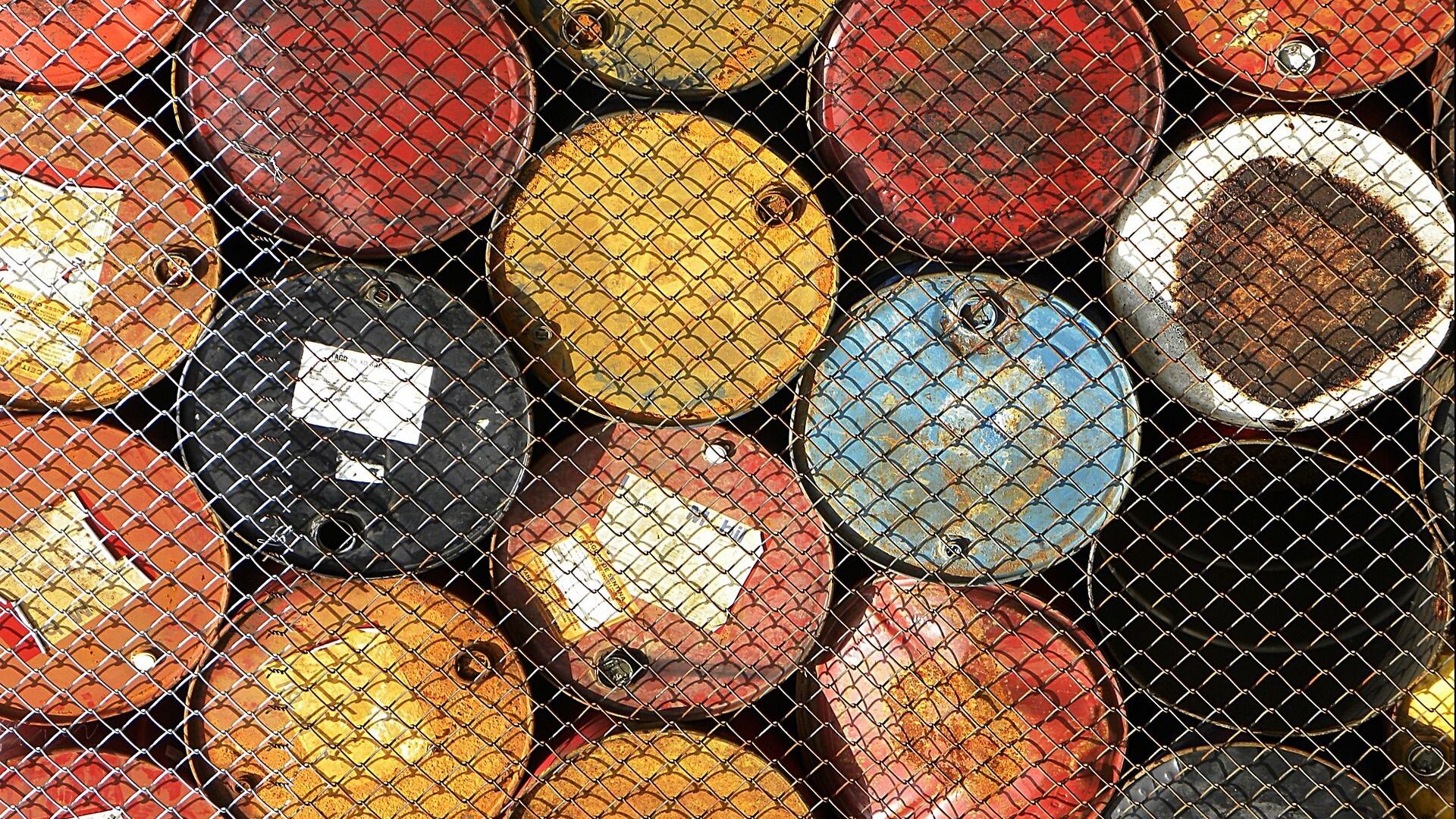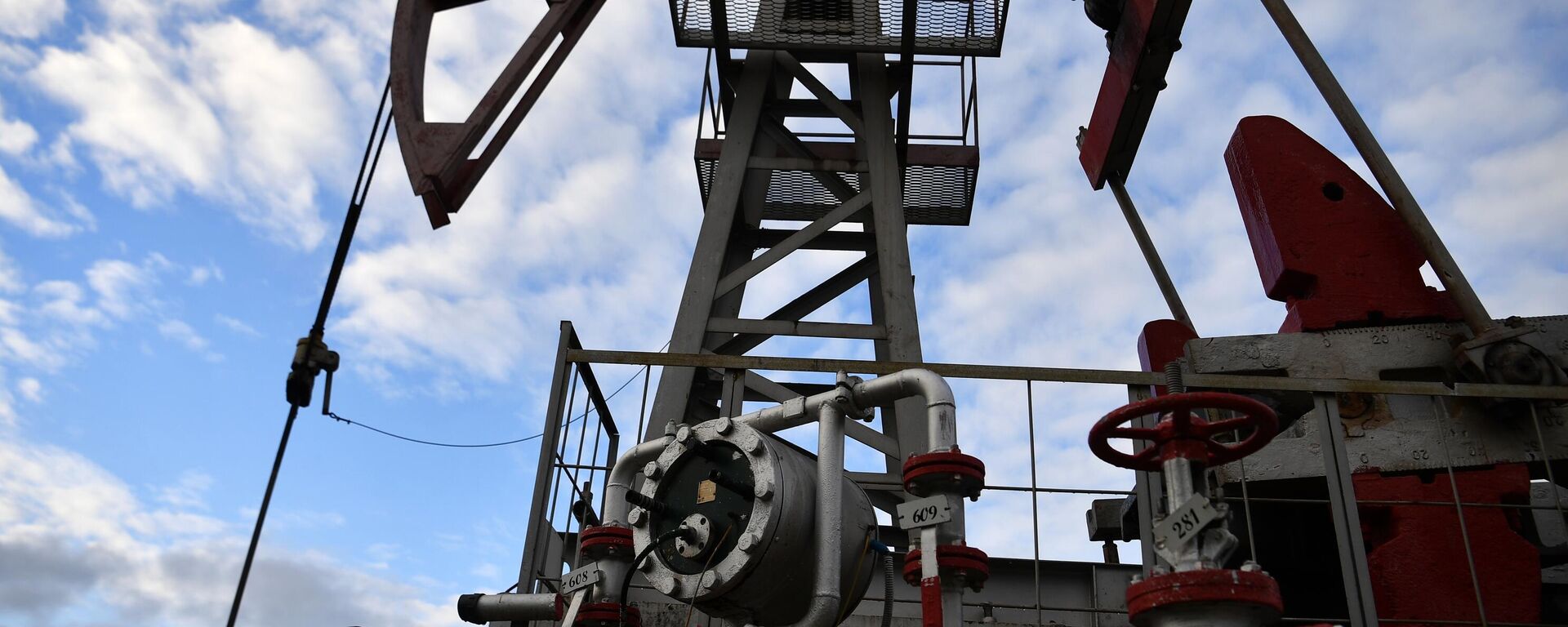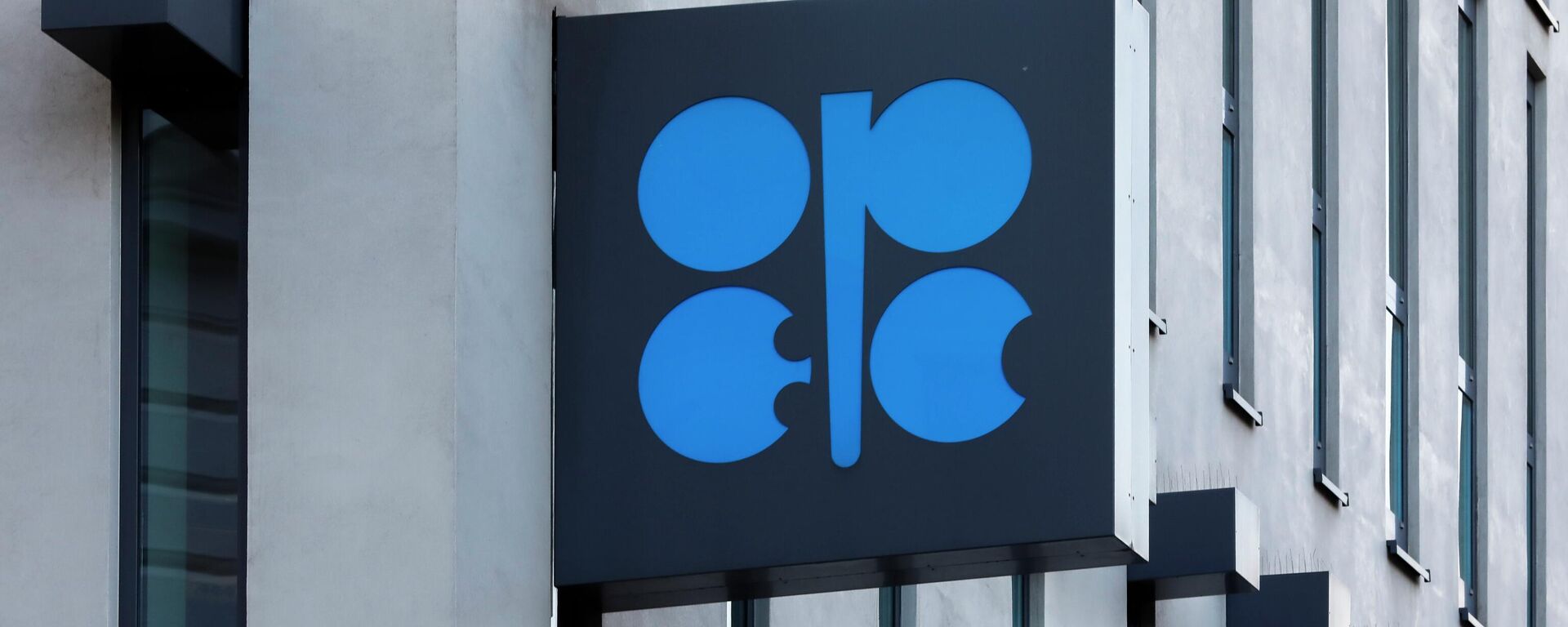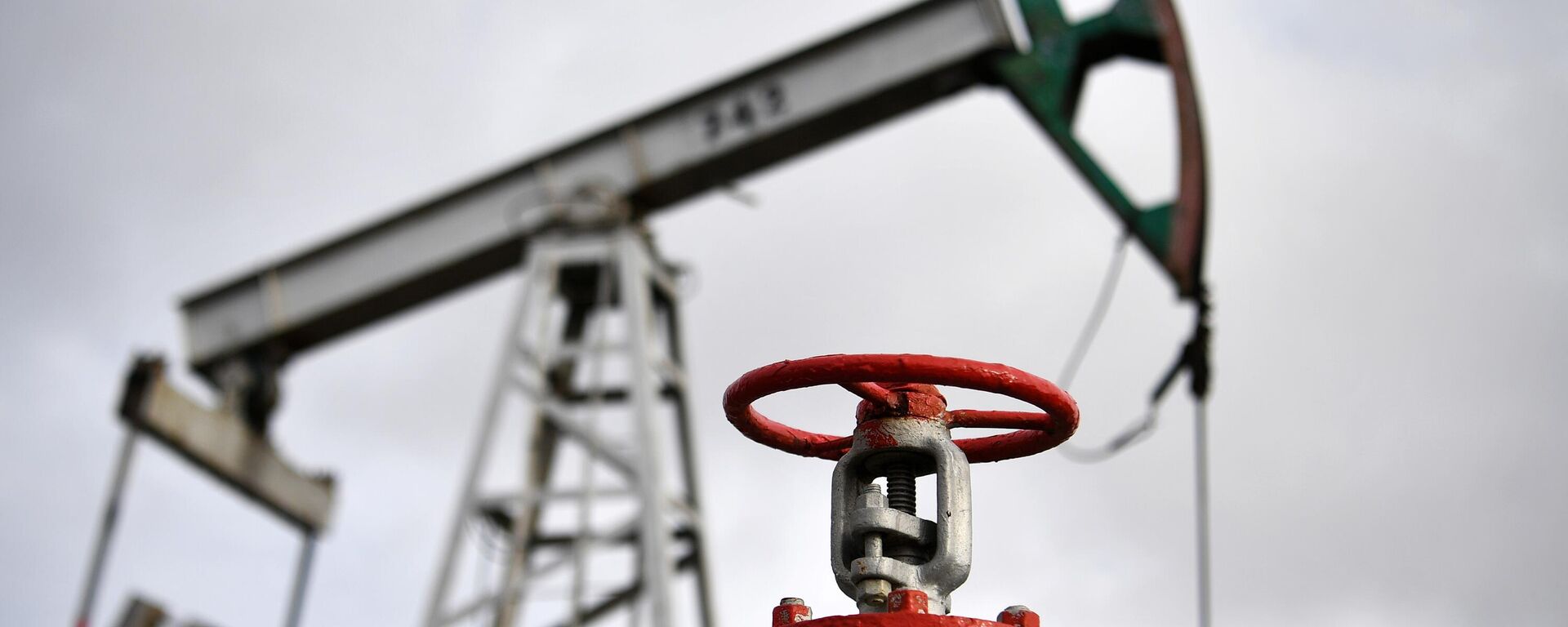https://sputnikglobe.com/20230605/crude-spikes-as-saudi-arabia-pledges-to-cut-production-after-opec-meeting-1110911080.html
Crude Spikes as Saudi Arabia Pledges to Cut Production After OPEC+ Meeting
Crude Spikes as Saudi Arabia Pledges to Cut Production After OPEC+ Meeting
Sputnik International
Crude prices jumped after Saudi Arabia pledged to cut production to boost flagging oil prices.
2023-06-05T08:45+0000
2023-06-05T08:45+0000
2023-06-05T10:16+0000
crude oil
oil
wti
oil price
oil prices
saudi arabia
opec
alexander novak
riyadh
economy
https://cdn1.img.sputnikglobe.com/img/107820/19/1078201903_0:173:1920:1253_1920x0_80_0_0_6a0dc1b083c8ae56f6c5b1377d68c598.jpg
The oil market wasted no time responding to Saudi Arabia’s pledge to slash production.In early Asian trade on Monday, West Texas Intermediate (WTI) futures spiked almost 5 percent, reaching a high of $75.06 a barrel. WTI later settled at $74.01 a barrel, up 3.2 percent.July futures of the international benchmark - Brent crude – also hit a high of $78.73 a barrel at one point during the session, settling at $78.42 a barrel, up $2.29.The world's top exporter of oil pledged more production cuts on 4 June after a series of meetings of the 13-member Organization of Petroleum Exporting Countries (OPEC+) and its partners, led by Russia, in Vienna.Whereas OPEC+ opted to adhere to its 2023 oil production target, the cartel's de facto leader - Saudi Arabia - announced further "voluntary" cuts. Riyadh's cuts will thus rein in the kingdom's daily oil production to 9 million barrels, from a pre-April production rate of 10.5 million bpd. Energy Minister Prince Abdulaziz bin Salman referred to the cuts as a "Saudi Lollipop". The Saudi Ministry of Energy explained that the cut was designed to "reinforce the precautionary efforts made by OPEC+ countries with the aim of supporting the stability and balance of oil markets,” the local press added.As for OPEC+, it agreed on Sunday to adjust the overall oil production level to 40.463 million barrels per day throughout 2024.The decision was, "to achieve and sustain a stable oil market, and to provide long-term guidance for the market," they said.OPEC+ is not aiming for a specific oil price, Saudi Energy Minister Prince Abdulaziz bin Salman said during a press conference after the group's meeting.OPEC+, whose members pump around 40 percent of the world's crude, cut oil production by 9.7 million barrels per day in May 2020 because of a slump in demand caused by the COVID-19 pandemic. In August 2022, the alliance began the final phase of reversing these cuts. However, in November it decided to cut production again by 2 million barrels per day from the maximum possible level in August, to be in effect until the end of 2023. The decision on the November cuts by OPEC+ was made in response to uncertainty in global oil market outlooks, in part caused by Western sanctions on Russian energy deliveries and the G7 plans to introduce a price cap on Russian crude. Moscow had repeatedly warned that any attempts to "cap" the price of Russian oil might lead to a halt in exports. Russia accounts for about 10 percent of the global crude oil market. Furthermore, several OPEC+ countries had said on 3 April that they planned to carry out a production cut of 1.5 million barrels daily that would add to earlier reductions of 2 million bpd since November 2022. At the time, oil prices surged, but reversed course in the weeks that followed.The present OPEC+ talks come after Russian Deputy Prime Minister Alexander Novak insisted in late April that Russia sees no need to extend OPEC+ production cuts because of slower-than-expected demand growth in China and lower oil prices. Novak also indicated that other OPEC+ member states may later apply additional cuts in oil production announced by some members in April if they deemed it necessary to stabilize the market.OPEC's 13 members comprise Algeria, Angola, the Republic of the Congo, Equatorial Guinea, Gabon, Iran, Iraq, Kuwait, Libya, Nigeria, Saudi Arabia, the UAE, and Venezuela, with the Saudis serving as the oil alliance's de facto leader. OPEC+ includes major non-member oil producers which agree on supply agreements and other arrangements aimed at keeping global oil prices and supplies stable. Among its members are Azerbaijan, Bahrain, Brunei, Kazakhstan, Malaysia, Mexico, Oman, the Philippines, Russia and Sudan.OPEC+ is scheduled to hold its next OPEC and non-OPEC Ministerial Meeting in Vienna on 26 November.
https://sputnikglobe.com/20230604/russia-to-extend-voluntary-oil-production-cut-until-december-2024---deputy-prime-minister-1110906951.html
https://sputnikglobe.com/20230530/opec-to-approve-return-of-iranian-oil-to-market-when-sanctions-lifted---secretary-general-1110786927.html
https://sputnikglobe.com/20230526/opec-to-decide-what-is-better-for-oil-market----russian-deputy-pm-1110599175.html
saudi arabia
Sputnik International
feedback@sputniknews.com
+74956456601
MIA „Rossiya Segodnya“
2023
News
en_EN
Sputnik International
feedback@sputniknews.com
+74956456601
MIA „Rossiya Segodnya“
Sputnik International
feedback@sputniknews.com
+74956456601
MIA „Rossiya Segodnya“
oil prices, crude futures rise, opec+ meeting, saudi arabia, to cut production, wto futures, brent benchmark
oil prices, crude futures rise, opec+ meeting, saudi arabia, to cut production, wto futures, brent benchmark
Crude Spikes as Saudi Arabia Pledges to Cut Production After OPEC+ Meeting
08:45 GMT 05.06.2023 (Updated: 10:16 GMT 05.06.2023) In the wake of an OPEC+ meeting in Vienna, Saudi Arabia announced that it would cut oil supply by a further million barrels a day in July, dropping output to 9 million bpd from around 10 million in May to bolster the global energy market's stability.
The oil market wasted no time responding to Saudi Arabia’s pledge
to slash production.
In early Asian trade on Monday, West Texas Intermediate (WTI) futures spiked almost 5 percent, reaching a high of $75.06 a barrel. WTI later settled at $74.01 a barrel, up 3.2 percent.
July futures of the international benchmark - Brent crude – also hit a high of $78.73 a barrel at one point during the session, settling at $78.42 a barrel, up $2.29.
The world's top exporter of oil pledged more production cuts on 4 June after a series of meetings of the 13-member Organization of Petroleum Exporting Countries (OPEC+) and its partners, led by Russia, in Vienna.
Whereas OPEC+ opted to adhere to its 2023 oil production target, the cartel's de facto leader - Saudi Arabia - announced further "voluntary" cuts.
"The Kingdom [of Saudi Arabia] will implement an additional voluntary cut in its production of crude oil, amounting to one million barrels per day, starting in July for a month that can be extended,” the state-owned Saudi Press Agency announced on Sunday.
Riyadh's cuts will thus rein in the kingdom's daily oil production to 9 million barrels, from a pre-April production rate of 10.5 million bpd. Energy Minister Prince Abdulaziz bin Salman referred to the cuts as a "Saudi Lollipop". The Saudi Ministry of Energy explained that the cut was designed to "reinforce the precautionary efforts made by OPEC+ countries with the aim of supporting the stability and balance of oil markets,” the local press added.
As for OPEC+, it agreed on Sunday to adjust the overall oil production level to 40.463 million barrels per day throughout 2024.
"The Participating Countries decided to… [a]djust the
level of overall crude oil production for OPEC and non-OPEC Participating Countries in the [Declaration of Cooperation] to 40.46 mb/d, starting 1 January 2024 until 31 December 2024," they said in a joint statement.
The decision was, "to achieve and sustain a stable oil market, and to provide long-term guidance for the market," they said.
OPEC+ is not aiming for a specific oil price, Saudi Energy Minister Prince Abdulaziz bin Salman said during a press conference after the group's meeting.
OPEC+, whose members pump around 40 percent of the world's crude, cut oil production by 9.7 million barrels per day in May 2020 because of a slump in demand caused by the COVID-19 pandemic. In August 2022, the alliance began the final phase of reversing these cuts. However, in November it decided to cut production again by 2 million barrels per day from the maximum possible level in August, to be in effect until the end of 2023.
The decision on the November cuts by OPEC+ was made in response to uncertainty in global oil market outlooks, in part caused by Western sanctions on Russian energy deliveries and the G7 plans to introduce
a price cap on Russian crude. Moscow had repeatedly warned that any attempts to "cap" the price of Russian oil might lead to a halt in exports. Russia accounts for about 10 percent of the global crude oil market.
Furthermore, several OPEC+ countries had said on 3 April that they planned to carry out a production cut of 1.5 million barrels daily that would add to earlier reductions of 2 million bpd since November 2022. At the time, oil prices surged, but reversed course in the weeks that followed.
The present OPEC+ talks come after Russian Deputy Prime Minister Alexander Novak insisted in late April that Russia sees no need to extend OPEC+ production cuts because of slower-than-expected demand growth in China and lower oil prices. Novak also indicated that other
OPEC+ member states may later apply additional cuts in oil production announced by some members in April if they deemed it necessary to stabilize the market.
OPEC's 13 members comprise Algeria, Angola, the Republic of the Congo, Equatorial Guinea, Gabon, Iran, Iraq, Kuwait, Libya, Nigeria, Saudi Arabia, the UAE, and Venezuela, with the Saudis serving as the oil alliance's de facto leader.
OPEC+ includes major non-member oil producers which agree on supply agreements and other arrangements aimed at keeping global oil prices and supplies stable. Among its members are Azerbaijan, Bahrain, Brunei, Kazakhstan, Malaysia, Mexico, Oman, the Philippines, Russia and Sudan.
OPEC+ is scheduled to hold its next OPEC and non-OPEC Ministerial Meeting in Vienna on 26 November.





